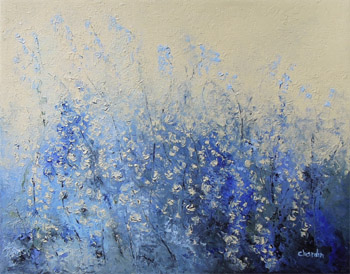
|
|
Copyrights and why they Matter It may not be an exciting read, but you don't want to Infringe! Copyright is the legal right given to a writer, composer, artist, or a distributor to exclusive production, sale, or distribution of their work. A copyright gives the author of the work limited, exclusive rights to: Reproduce the work; create derivative works based on the original work; distribute copies of the work; perform the work; or, display the work in public. The period of protection for copyrighted works created on or after January 1, 1978, is the life of the creative person plus 70 years if the work was created by an identified human being. Works created anonymously, under a pseudonym or for a business entity, are protected for the shorter of 120 years from creation or 95 years from first publication. Copyrights that predate January 1, 1978, generally have a period of protection of 95 years, though you should see an art attorney if you need to calculate the precise expiration date of such a work. If a work is no longer protected, then it is in the public domain, and there is no prohibition on copying it. The Berne Convention, which the U.S. is a signatory to, states that the mere creation of the work places it under copyright protection. As soon as a work is "fixed", that is, written or recorded on some physical medium, its author is automatically entitled to all copyrights in the work, and to any derivative works unless and until the author explicitly disclaims them, or until the copyright expires. It would not hurt to place the standard copyright symbol on the work, that is the "C-in-a-circle" (©) with your REAL name, and the date (or year) of creation. It takes almost no time; there is no reason not to put a notice on the work, and it will invalidate the excuse of "Innocent Infringement". Note the above in RED. "The mere creation of the work places it under copyright protection." Therefore, I always sign the front of my paintings with 'chardin', and the back of the canvas with my full name, Cheryl Hardin. I don't use a © symbol on the front of paintings, though some artists do so. 

Blue Garden, Artist Cheryl Hardin, 11x14" ALWAYS use your real name, or if you must, a registered pen name. If you cannot prove that you are that person, then you cannot claim the copyright on the creation. The Copyright Office does not require you to use your real name, but if you must take legal action, you must be able to prove that you were the one that created the work. The use of a registered "D.B.A." or "pen name" should work, but if you use a "fan name", you might have difficulty. If you want to go one step further, you can register your work with the U.S. Copyright Office. Basically, you fill out a form, pay a fee, and send in 2 copies of the "best" reproduction of your work (if a book, the hardback version vs. the paperback, etc...) You will then receive notice that it has been registered. The work is now on file in the Library of Congress, and that is the best proof that on a certain date, you created that work. Registering it also allows you to sue for statutory damages as well as attorney's fees in case of infringement, as opposed to basic "actual losses", which may be difficult to calculate. While registration isn't needed to exercise copyright, in jurisdictions where the laws provide for registration, it serves as prima facie evidence of a valid copyright and enables the copyright holder to seek statutory damages and attorney's fees. (In the USA, registering after an infringement only enables one to receive actual damages and lost profits.) Click here go to Blog 5. |
|
S I T E M A P
All works original and © Copyright of the Artist, Cheryl Hardin.
chardinart.com © Copyright 2006-2024 Cheryl Hardin. All Rights Reserved. USA.